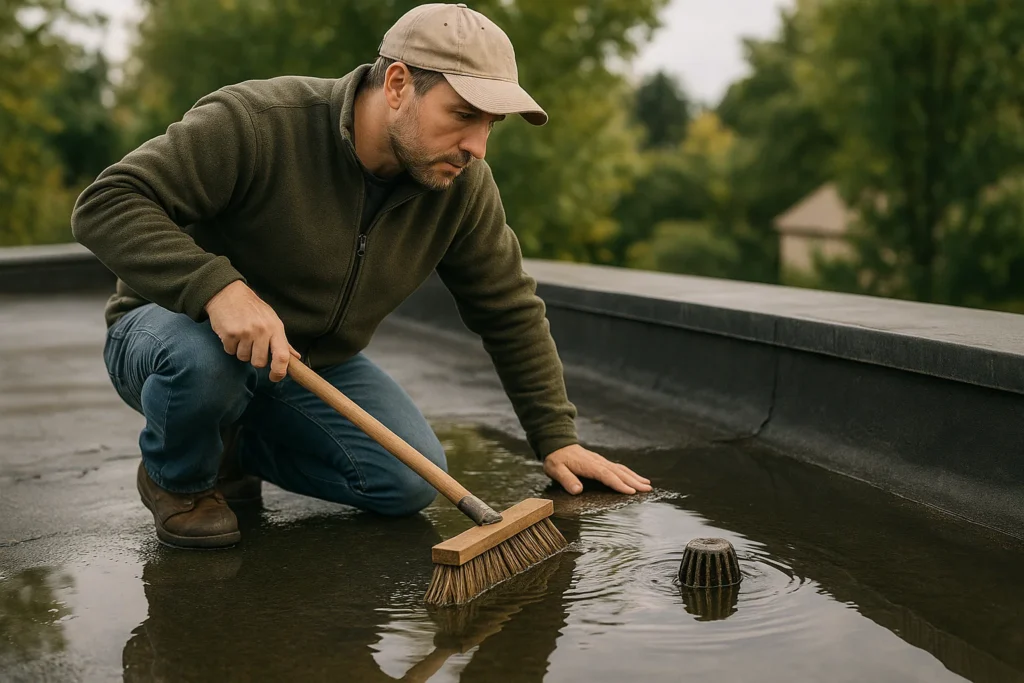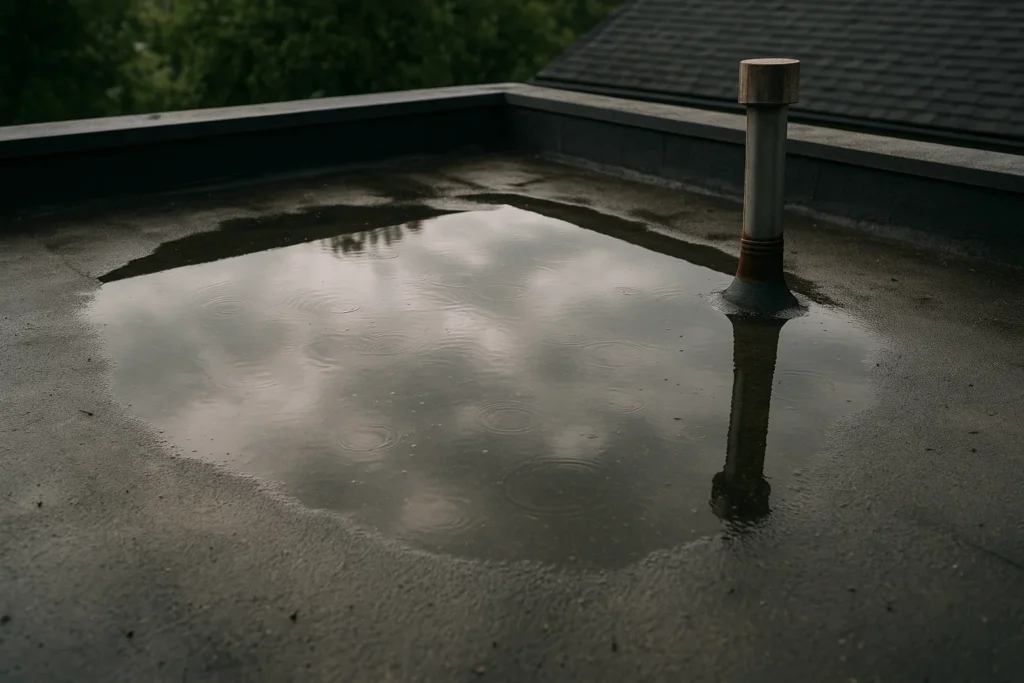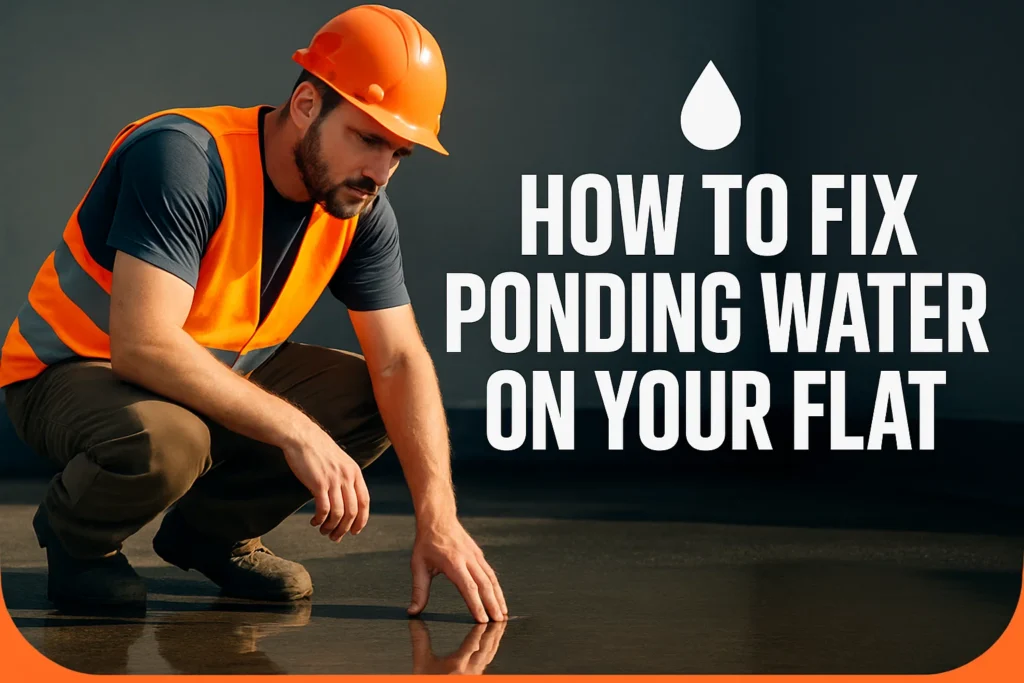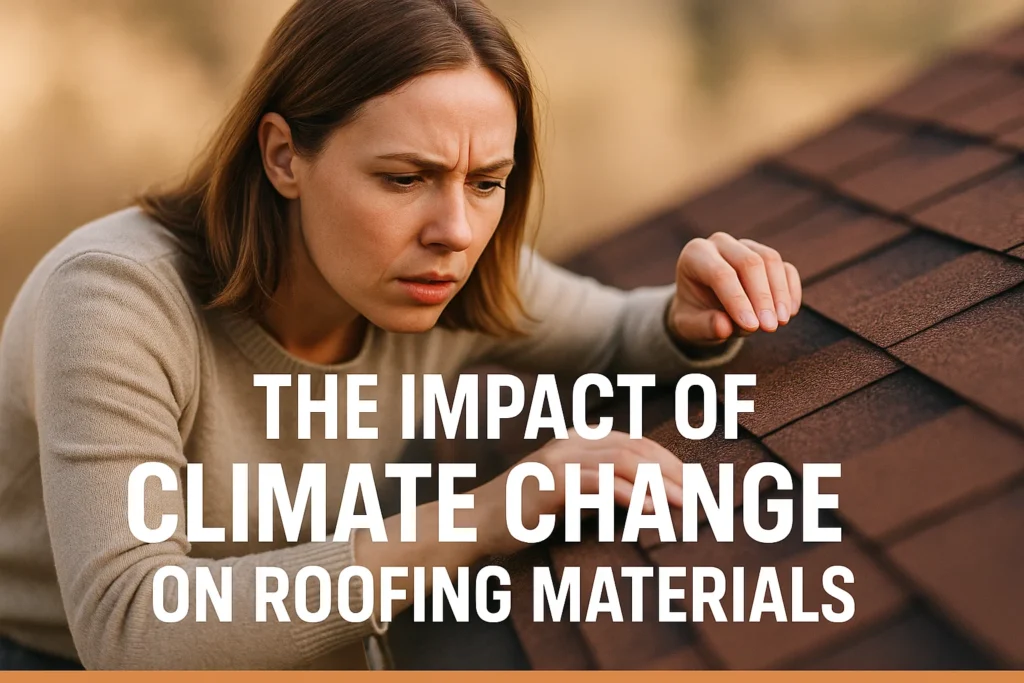Roof ponding or water ponding is the water standing on level or low-sloping roofs. This ponded water can be structurally problematic and leak-creating when not corrected. It is necessary to understand how ponding water is formed, what the dangers of it are, and what can be done to correct it because of such importance to the homeowners and building managers desiring to preserve their roofs and properties.
What is Ponding on Roof and Why is it a Problem?
Roof ponding refers to the accumulation of standing water on low-sloping roofs or flat roofs, and cannot drain in less than 48 hours after rain. This occurs when a roof lacks the right slope or has water drainage issues where the water collects in depressions and remains there longer. While small amounts of water may be expected after rain, ponding of water can be very problematic.
The presence of ponded water is not desirable because it accelerates the degradation of roofing materials and may result in leakages. Furthermore, algae, mold and debris are fostered by ponding water and it can cause damage to the roof and drainage systems. Roof ponding can be corrected only at a later stage, so that the roof can last longer.
Causes of Roof Ponding
Inadequate Roof Pitch
Flat roofs are preferred to be slightly sloping (1/4 inch per foot) just to facilitate drainage of water. In cases where the slope is poor or weakened through settlements or other construction faults, the water accumulates in depressions, which lead to ponding.
Bad drainage system
Clogged or small or mispositioned drains might block the free water flow off the roof. A clogged gutter, downspout, or inside drain limits the extent of drainage, and therefore, there is a chance of pooling water.

Structural Issues
The roof may have sunken or sagging roof decks, flimsy supporting members, or foundation settlement that would create low areas onto which water can collect. These problems may be compounded by heavy rooftop equipment and additional loads without reinforcement.
Deterioration Of Debris And Debris
Roofing materials that have aged may lose their shape to form depressions. The debris built up over time, such as leaves and other debris, can get into the drains and cause an obstruction that leaves the water trapped.
Steps to Remove Ponded Water from Your Roof
By doing these steps, you will be able to remove ponded water and ensure that your roof is safe. Proper maintenance and professional care make your roof dry and healthy even after each shower.
1. Check Roof Pitch and Drainage
Check to ensure that your roof is well-pitched to drain water onto drains or scuppers. Flat roofs must be sloped to at least prevent the accumulation of water. Make sure that all the drainage outlets, like the gutters, downpipes, and drains, are free of obstruction.
2. Clean and maintain the Drains regularly
Clean out drains, gutters and downspouts regularly. By maintaining these pathways free, water drains off your roof more easily and prevents backups that cause ponding.
3. Better Drainage System
In case your drainage system is inadequate, add additional drains, scuppers, or overflow outlets. This enhances the roof’s ability to get rid of water fast and minimizes the chances of stagnant water.
4. Right Roof Pitch
Properly installed tapered insulation, crickets (small sloped structures), or saddles to divert water off of low areas. Such solutions aid in the creation or reinstatement of the slope where water is likely to accumulate.
5. Fix Structural Problems
Repair any of the sunken or damaged roof decking that allows water to collect in depressions. Reinforcing the structure also serves to keep a flat, even surface that correctly channels water to drains.
6. Roof Leveling / Resurfacing
Use roofing compounds or coatings that fill dips and smooth rough surfaces. This produces a uniform roof surface and enhances the drainage of water and prevents ponding.
7. Arrange Commercial Roof Inspection
Consult roofing experts regularly to diagnose the hidden issues and prescribe specialized repairs. Professional evaluation assists in the avoidance of repetitive ponding problems and increases the life of the roof.
Cost to repair the roof ponding
The cost to repair roof ponding varies based on the severity of the issue, roof size, materials, and the type of repair needed. On average:
| Repair Type | Average Cost Range (USD) |
| Cleaning drains and minor fixes | $75 – $500 |
| Drain repair or replacement | $75 – $500 |
| Roof surface leveling or coating | $300 – $1,750 |
| Structural reinforcement | $1,000 – $6,000 |
| Adding tapered insulation/slope | $1,500 – $3,000 |
| Membrane or patch repair | $300 – $1,750 |
| Partial roof repair | $600 – $2,500 |
| Full roof replacement | $5,700 – $12,500 |
Long-Term Maintenance to Prevent Ponding Issues
Regular long-term maintenance is the key to preventing roof ponding and extending the life of your roof. These are some of the practices that can help keep ponding water away:
Regular Roof Inspection: It is advisable to do bi-annual inspections in spring and fall seasons to inspect water accumulation, damage to the membrane or structural sagging. Awareness can lead to early repair and lessening of the damage before it is too late.
Clean Drains and Gutters: Clean drains, gutters and downspouts of leaves, dirt, branches, and other debris. Drainage channels are clear, to ensure the free flow of water off the roof.

Ensure Good Drainage Systems: Ensure that drainage systems are maintained and upgraded where necessary. Install extra drains or scuppers in water prone areas and ensure that they are not blocked.
Maintain Roof Slope: Keep roof slope by filling in depressions with tapered insulation, crickets or leveling compounds. Water flows in the right direction with proper slope towards drains
Protect Roofing Membrane: Use waterproofing substances or membrane overlays, which do not allow the effects of standing water. The maintenance of the membranes at the right time helps to avoid leakages and wearing out of the materials.
Control Vegetation and Debris: Prune tree branches that overhang the roof and clear the roof surface of all debris that can trap or hold water or clog drainage.
Involve Professional Maintenance: Let roofing professionals carry out regular maintenance and inspection. Experts will be able to detect underlying problems and implement expert solutions to provide long-term control of water.
Adopting these measures, the property owners will be able to lower the risk of roof ponding to a considerable level and protect the structural integrity of their buildings as well as prevent expensive repairs or premature replacement of their roofs. Routine care is a cost-effective expense that reaps the reward of longevity and performance.
Conclusion
A typically notorious problem, especially with flat or low-sloping roofs, roof ponding can cause expensive damage unless dealt with early enough. Stagnant water in these ponds speeds up the degradation of roofing materials, triggers leakage, promotes mold growth and exposes roofing structures to excess weight. However, through regular maintenance and timely repair work, quality assessment and evaluation, ponding issues can be controlled and prevented. Frequent checks and active maintenance are expenses that safeguard your roofing system and the value of your property.
FAQs
Inadequate slope, drainage clogging or inadequacy, structure sagging or accumulated debris that blocks the water flow are the main causes of a roof ponding.
Stagnant water wears down roofing materials and increases the risks of leaking, fosters mold growth and can add weight that exerts pressure on the roof structure.
Stagnant water that is more than 48 hours old following a rainfall event is termed as ponding and this can be damaging.
Little fixes such as cleaning drainage, can be DIY but the position of the slope and structural repair should be handled by experts.
The inspection of the roof should be performed at least twice a year and after storms or intense rain.







